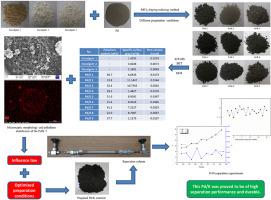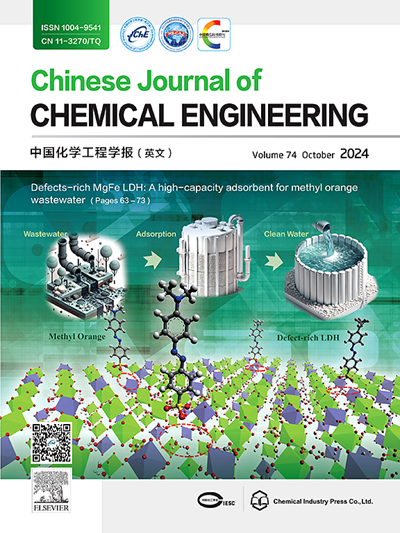Preparation and evaluation of palladium/kieselguhr composites for hydrogen isotope separation
IF 3.7
3区 工程技术
Q2 ENGINEERING, CHEMICAL
引用次数: 0
Abstract
The palladium/kieselguhr composites (Pd/K) were prepared by the PdCl2 dipping-reducing method. The effects of the preparation conditions on the Pd/K were studied, such as the heat treatment, dipping time, palladium concentration in solution and number of loading cycles. The pore structure and palladium content of the Pd/K were measured by the Brunauer–Emmett–Teller method and an inductively coupled plasma mass spectrometry. The appearance and palladium element distribution were measured by a scanning electron microscope. It is found that the palladium element is more densely distributed in the irregular and porous parts of the kieselguhr particles, so the kieselguhr is superior to Al2O3 as the carrier material. The heat treatment can improve the pore permeability and increase the palladium content for the Pd/K. Increasing the dipping time, palladium concentration in solution and number of loading cycles is beneficial to increase the palladium content of the Pd/K, but more loading cycles may lead to the pore collapse, which obstructs the interaction with the hydrogen isotope gases. A kind of Pd/K was prepared under a set of optimized conditions and was packed in a separation column. This Pd/K was proved to be of high performance and durable by some hydrogen–deuterium separation experiments.

氢同位素分离钯/kieselguhr复合材料的制备与评价
采用PdCl2浸渍还原法制备了钯基复合材料(Pd/K)。研究了热处理、浸渍时间、溶液中钯浓度和加载次数等条件对Pd/K的影响。采用brunauer - emmet - teller法和电感耦合等离子体质谱法测定了Pd/K的孔结构和钯含量。用扫描电镜对其形貌和钯元素分布进行了测量。发现钯元素更密集地分布在kieselguhr颗粒的不规则和多孔部分,因此kieselguhr作为载体材料优于Al2O3。热处理可以改善孔隙渗透率,提高Pd/K的钯含量。增加浸提时间、溶液中钯浓度和加载循环次数有利于提高Pd/K中钯的含量,但加载循环次数过多可能导致孔隙坍塌,阻碍了与氢同位素气体的相互作用。在一组优化条件下制备了一种Pd/K,并将其装入分离柱中。经氢氘分离实验证明,该Pd/K材料性能优良,经久耐用。
本文章由计算机程序翻译,如有差异,请以英文原文为准。
求助全文
约1分钟内获得全文
求助全文
来源期刊

Chinese Journal of Chemical Engineering
工程技术-工程:化工
CiteScore
6.60
自引率
5.30%
发文量
4309
审稿时长
31 days
期刊介绍:
The Chinese Journal of Chemical Engineering (Monthly, started in 1982) is the official journal of the Chemical Industry and Engineering Society of China and published by the Chemical Industry Press Co. Ltd. The aim of the journal is to develop the international exchange of scientific and technical information in the field of chemical engineering. It publishes original research papers that cover the major advancements and achievements in chemical engineering in China as well as some articles from overseas contributors.
The topics of journal include chemical engineering, chemical technology, biochemical engineering, energy and environmental engineering and other relevant fields. Papers are published on the basis of their relevance to theoretical research, practical application or potential uses in the industry as Research Papers, Communications, Reviews and Perspectives. Prominent domestic and overseas chemical experts and scholars have been invited to form an International Advisory Board and the Editorial Committee. It enjoys recognition among Chinese academia and industry as a reliable source of information of what is going on in chemical engineering research, both domestic and abroad.
 求助内容:
求助内容: 应助结果提醒方式:
应助结果提醒方式:


